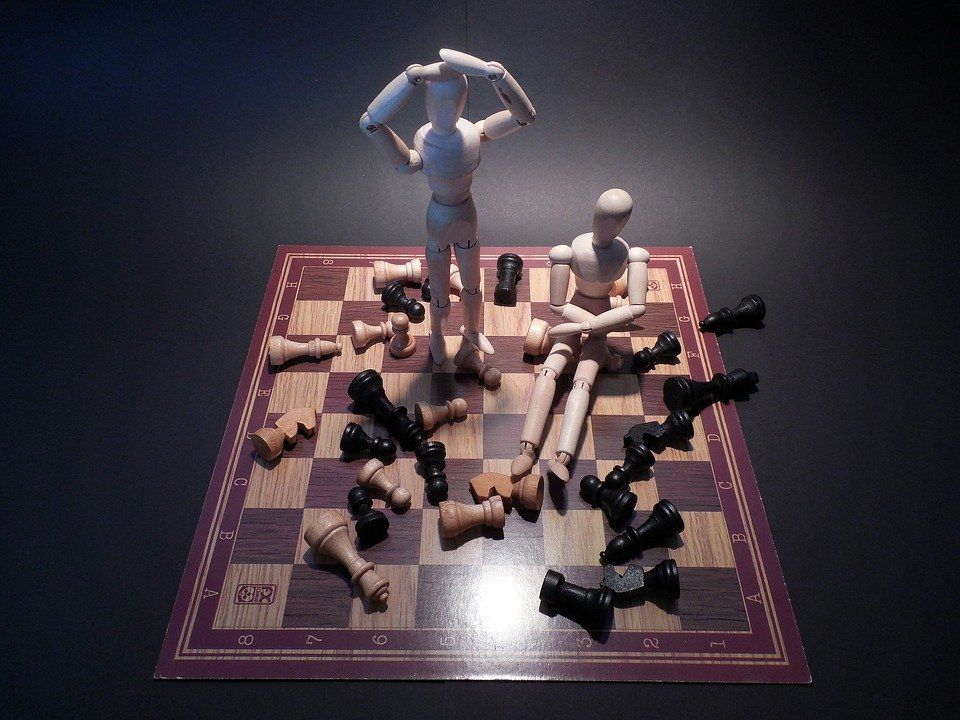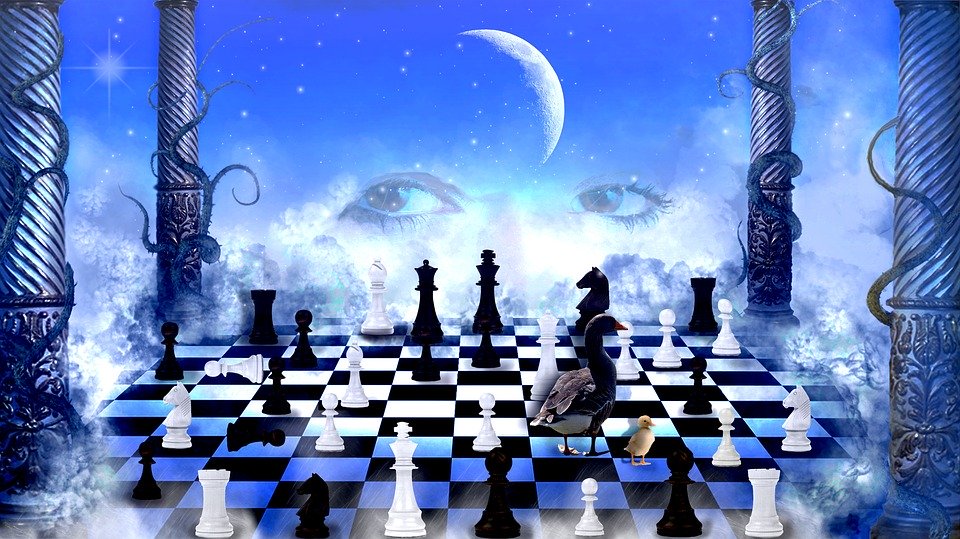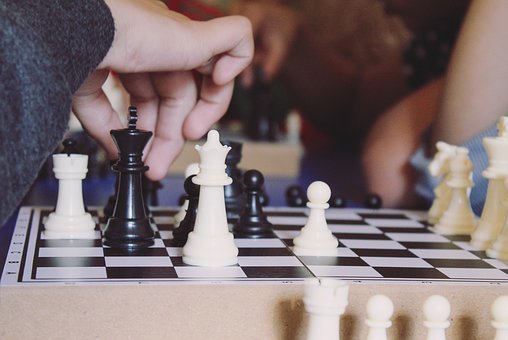Russian Emperor Paul I (1754-1801) loved to play chess and was known as a good player.
Once a man was sent to his palace from prison, convicted of speaking out against the emperor. Paul, asking about the circumstances of the case, asked him:
– Do you play chess?
“Yes,” the prisoner replied.
They played three games, and the emperor lost everything.
“Release him,” Paul ordered. – Such a wonderful chess player cannot be a criminal.

The French king Louis XVI once asked his subject Philidor to teach him how to play chess.
Six months passed and the king wished to find out how Philidor appreciated his game.
“Your Majesty,” answered Filidor, “I divide all chess players into three groups: the first includes those who can’t play chess, the second – those who play poorly and the third – those who play well. You, Your Majesty, are making progress – you are already in the second group. Francois Andre Filidor
The famous chess player Bogolyubov after the disease began to recover actively.
In Amsterdam, he met with Grandmaster Bronstein, who had not seen him for several years.
“You have changed a lot,” remarked Bronstein. “You look like a double pawn now.”
At the beginning of the 20th century, a tournament between two veterans took place at a tournament in St. Petersburg.
72-year-old Blackburn defeated the 60-year-old Gunsberg. Addressing the defeated, the winner strictly observed:
– Young you still compete with me
M. Tal was once asked:
“How do you assess the chances of Maya Chiburdanidze to become the world champion among men?”
Tal replied: “Much higher than mine – to become a world champion among women”
He played a witty joke with the arrogant amateur Em. Lasker.
It was a train compartment. Unaware that the great maestro was in front of him, the amateur offered to pass the time by playing chess.
– What approximately power do you play? He inquired.
– Oh, very mediocre! – answered Lasker.
“Then I will take the queen off the board to equalize the odds — otherwise I will not be interested.
– As you please. But, it seems to me, the queen only interferes with the game, ”said Lasker.
– You really do not understand anything in chess! – and the amateur, resolutely removing the queen from the board, began the game.
Deliberately substituting one piece for another, Lasker lost. Surrendering, he remarked:
“I was right, and, if you will, I will prove to you that it is much easier to act without a queen.”
“There are such ignorant people!” – the amateur was already starting to regret having started a game, but decided to be indulgent. – Well, try it.
Now I removed the queen Lasker from the board. And he won.
“You see,” Lasker went on. – The point is not in the strength of the game. I noticed a long time ago: he who does not have a queen has a great advantage. Want to check again.
And he again repeated the hoax, which refuted all chess laws.
The partner was completely confused …

At the end of the 19th century, Grandmaster Steinitz performed at a club in New York and played with local club members.
In a game with Marshall, a chess player from San Francisco, a misunderstanding occurred.
Marshall claimed the next move was his, but Steinitz strongly objected.
Numerous viewers were quite surprised when Steinitz mixed the pieces, and then recalled the entire game from memory to the last move and proved that the game was going right.
This fact shocked the audience, considering that before this Steinitz played twenty-six games.
The famous chess player Lazarevich suggested Naydorf to arrange an international match between women and men.
“Find a dozen beautiful chess players – and arrange,” Naydorf agreed.
Lazarevich answered: – If you find twelve beautiful grandmasters, I am ready to fulfill your condition.
How did the Grünfeld defense arise?
In 1922, Ernst Grünfeld played a match with Albert Becker. In the fourth game, intending to erect Old Indian formations (after 1.d4 Kf6 2.c4 g6 3.Kc3), Grünfeld absentmindedly moved the d-pawn two fields forward instead of one. At first he was upset, but had to play. Grunfeld’s typo had a great future.
In Baku, an elderly man approached Mikhail Tal on the embankment.
“A young man,” he said, “you look very much like Grandmaster Tal, though he looks much more solid …”
“I know it has been said to me more than once,” Tal answered.
The renaming of the chess “queen” to “queen” is connected with the real facts of history.
In ancient times, this figure was called the “vizier” (first minister) or “queen”, moved only one cell diagonally and was a weak figure. And in the XV century there was a change in the rules of the game: the figure “queen” began to be called the “queen” and received significant game power. Many chess historians believe that the power acquired by the chess queen corresponds to the power and political influence received by the real queen – Queen Isabella of Castile.
When the first grandmaster appeared in England, a real chess boom began.
This prompted theater directors to introduce scenes in which actors play chess. But the chess level of the actors was quite low. Cases were noted when the spectators of the first rows of the stalls prompted moves, taunted the actors and even cursed obscene words.
In the story of the Strugatsky brothers “Noon, XXII Century”, the Casparo-Karpov system is mentioned.
This is the method that was used to make a “copy” of the brain and build its mathematical model. The story was published in 1962 – Anatoly Karpov was then only 11 years old, and Garry Kasparov was not yet born.
Chess and Grain
If you put 1 grain of rice on a chess cell, 2 grains on a second, 4 grains on a third, and so on. So, the total weight will be 460 billion tons.
The number of possible combinations of the first four moves in chess is 318 979 564 000.
Chess and clock
The Morphia-Paulsen game, played in 1853, when there was no chess clock, lasted 34 hours, and 34 moves were made in it.
You can play chess without capturing pieces.
There is a famous game that was played without a single capture of pieces for 94 moves.
Mikhail Moiseevich Botvinnik is the first of the Soviet chess players who won the title of world chess champion.
For 39 years of top-level appearances, Botvinnik got into the top ten best chess players in the world 33 times, the first in the top ten was 13 times. For comparison, Alekhine and Copablanca led the top ten 10 times. In total, Botvinnik played 887 games in competitions and scored 598.5 points.
In 1982, the Chess Federation of Germany, after many years of trying, made the Ministry of Finance recognize chess as “a useful sport of educational value”
This allowed the federation to receive tax benefits. The decisive argument was a quote from a letter from the Prussian King Frederick the Great: “Chess fosters a tendency to independent thinking.” The end of this phrase, which the federation preferred not to cite, read: “… and therefore they should not be encouraged.”
For the longest time – 27 years – Emmanuel Lasker remained the world chess champion
The world champion in a simultaneous game is not Karpov, Kramnik or Kasparov.
This is Czech Vlastimil Gort. During the demonstration match, he played at the same time 626 games. At the same time, he lost only every 10th game.
Case in a simultaneous Tal session
Once, after two sessions of the simultaneous game, in each of which 38 chess players were playing, a participant in the Mayer session approached Tal. He managed to beat Tal.
“You know,” Tal told him, “because I could play stronger in one place.”
Mayer was surprised: “Do you remember the game with me?”
“I remember all the games,” Tal said, and taking the paper, wrote down, without looking at the board, all 38 games.
In Zurich, the first FIDE president, Dr. Ryub, invited Alekhine’s wife to play a light game, but on condition that her husband was silent.
The chess king promised to keep his mouth shut and stepped aside. And when he returned, he discovered that his wife’s position had worsened. Having improved the right moment, Alekhine pulled the president’s boat from the board and again left.
Five minutes later Alekhine again approached. The situation of his wife became hopeless. Alekhine repeated his maneuver. After a long thought, Dr. Ryub cried out suddenly:
“Guard! Both of my rooks are gone! ” Suspicion fell on Alekhine, but he restrainedly remarked: “I can’t help with anything, because I promised to be silent during the game …”

Alekhine in a simultaneous game session
In one of the games of the session in Buenos Aires, Alekhine made a move with lightning speed and moved to the next board.
– Maestro! – his opponent exclaimed excitedly. – I declare you a checkmate in three moves!
“Calm down, señor,” Alekhine smiled. – I give you a mate a move earlier …
One banker invited A. Alekhine, the world chess champion, to play chess once a day for a fee
“But you will never win,” Alekhine was surprised.
– So what? – the banker agreed nonchalantly.
Daily cash receipts appealed to the world champion. In order not to lose the source of financing, he decided to give in to him once. When the banker won, he jumped up and shouted:
– I defeated Alekhine himself! – disappeared forever.
At 10, Garry Kasparov (born 1963) becomes a candidate for master of sports in chess.
At the age of 15 – a master of sports, at 17 – an international grandmaster. At the age of 22, having won against Anatoly Karpov (born 1951), he became the youngest world chess champion among men.
Chess traditions of Persia
In Persia, a compulsory wedding gift was chess.
The longest chess game itself
In the longest tournament game played by leading grandmasters, 142 moves were made. Its authors were Alexander Genrikhovich Belyavsky and Jonathan Simon Spilman.
Lena Dembo (born 1983) from Kuibyshev in three years fulfilled the norm of the fourth chess category.
Already in the year she knew the names of all chess pieces, and in two and a half she got acquainted with chess moves. At four, she became a third-rate student. By the age of five, she performed at eleven official competitions.
Math in chess
According to the calculations of mathematicians, two kings on a chessboard make it possible to get 3612 different positions, and from two kings and a pawn it is possible to compose 167248 positions. All pieces on the board can be placed in the amount of 7534686312361225327 positions.
